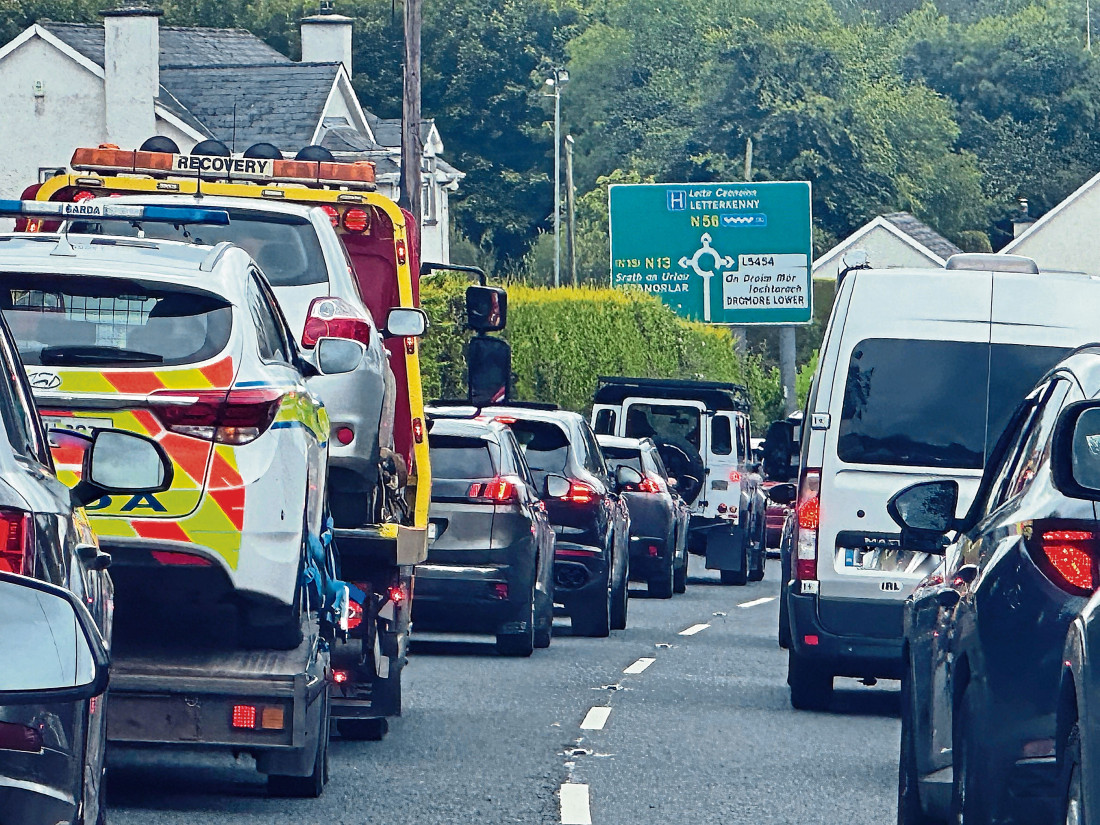SITUATED behind the Donegal County Museum on the High Road in Letterkenny is a rather undistinguished green metal cabinet.
It’s fair to assume that – even if it was in a more public place – the vast majority of people would not know what it is for if they were asked.
It would be no surprise if a common guess was that it is something to do with broadband.
But, no, this green-coloured box with its locked small cage-like structure on top is officially station number 64 of the country’s 115 air quality monitoring stations which have been set up by the Environmental Protection Agency (EPA).
Commissioned back in May 2019, it is constantly recording the air quality in Letterkenny.
Specialist devices measure what is known as particulate matter and sulphur dioxide.
The readings are fed through to the EPA’s air quality division and are instantly uploaded on line.
Each station now provides real-time monitoring, with hourly updates, and forecasting on the website airquality.ie.
Here you can see a colour coded map with an Air Quality Index for Health (AQIH) that ranges from one, which is coloured in green and denotes very good air quality, to ten, which is coloured purple and signifies very poor.
For the most part, Letterkenny scores the top one mark, denoting good quality air.. But that’s not to say that the air in the town is always in the very good category.
The most recent Air Quality in Ireland report, shows that fine particulate matter (PM2.5), mainly from burning of coal, peat and wood used for heat in many households – and nitrogen dioxide (NO2), chiefly from road traffic, continue to be the main threats to good air quality.
And there are times when the air quality in the Letterkenny area is not good.
The report notes using less solid fuel and cleaner fuels to heat our homes, making our homes more energy efficient and reducing our use of cars to go to school, work and play are actions that will contribute towards achieving our clean air targets.
And it adds that “Local authorities can facilitate people to make cleaner and healthier air quality choices by acting on the Solid Fuel Regulations and supporting alternatives to car travel.”
Letterkenny, Ennis in Co. Clare and Edenderry in Co. Offaly are three of the main towns that showed a number of daily breaches of air quality guidelines both last year and this year.
According to the Department of the Environment, Climate and Communications, it is anticipated that “the establishment an enhanced enforcement support structure will commence and that the
structure will be in place in 2025.”
The introduction of a new Clean Air Act is set to deliver cleaner air with limits on certain pollutants and Donegal County Council will be taking sterner action when it comes to enforcement.
While the town – and its hinterland – is a designated smokeless fuel area, it is accepted that there are households that do use non-smokeless coal which can be cheaper – and sometimes imported from the North.
Last November, the Donegal News reported that air pollution levels in Letterkenny had spiked on a number of days. Not only that, but Letterkenny recorded the worst air quality in Ireland on one particular day, according to the Environmental Protection Agency (EPA).
The monitoring station data just off the High Road revealed that particulate matter (PM2.5) was 27 times above the level recommended by the World Health Organisation (WHO) over a 24 hour period.
As already mentioned, the main contributing factor was the burning of solid fuel, and the fact that the town is surrounded by hills does not help as the polluted air can get trapped, especially if there is little wind.
So far this year, Letterkenny has had three days – January 7 and 9 and February 24 – where it scored 10 – the worst on the AQIH.
The main source of sulphur dioxide in Letterkenny is burning coal and oil to heat homes.
It is an irritant gas which attacks the throat and lungs. Prolonged exposure can lead to increases in respiratory illnesses like chronic bronchitis.
The main sources of particulate matter are solid fuel burning and vehicular traffic. Other sources are soil and road surfaces, construction works and industrial emissions or natural sources such as windblown salt, plant spores and pollens.
With cooler weather on the way in the months ahead, the readings at the air quality monitoring station will be watched carefully.
Donegal has two other air monitoring stations, in Buncrana and at Malin Head.
Not unlike Letterkenny, Buncrana had a number of days where there was a spike due to cooler weather and an increase in the burning of solid fuels in the area.
Malin Head consistently scores the best air quality rating of one.
Meanwhile, the council has a Climate Action Unit which is involved in a number of initiatives all around the county.
Almost €700,000 was allocated to Donegal in a bid to “build low carbon, sustainable communities, which will in turn contribute to the national climate and energy targets.”
And more than €1 million has been approved by the Department of Environment, Climate and Communications for 25 Donegal community-led, climate action projects with five Northern Ireland partners.
This funding will support a wide range of climate actions including the retrofitting of buildings, renewable energy generation, biodiversity enhancement and circular economy projects.
The Council is currently in the Contracting Phase of the Programme and will be moving to the Delivery Phase once Grant Agreements are co-signed with community groups and Donegal County










